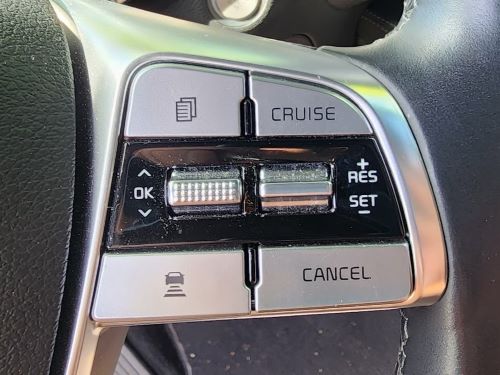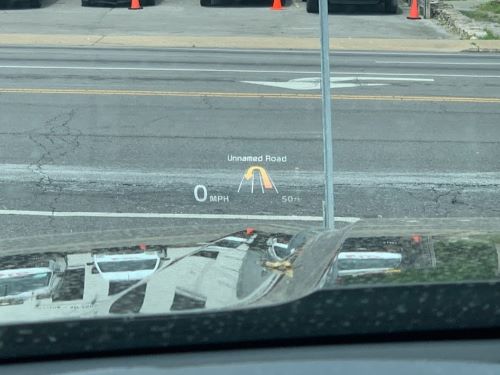Car safety technology has advanced rapidly over the years, with new options and features being introduced all the time. With so many options, it can be tough to choose your new vehicle "must-haves." Here are three safety features I love using, as well as one that I wouldn’t mind skipping.

1. Adaptive Cruise Control
Traditional cruise control is a system that allows you to maintain a constant speed without having to keep your foot on the accelerator pedal. You can set your desired speed and the car will automatically adjust to maintain that speed for you. It’s an incredibly handy feature, especially for driving on long stretches of highway with few turns and stops.
Adaptive cruise control (ACC) is an advanced form of cruise control that uses sensors to monitor your following distance. Just like traditional cruise control, you will choose a set speed you want your vehicle to maintain. Unlike traditional cruise control, ACC has the added advantage of automatically adjusting your speed to maintain a safe following distance. If the vehicle in front of you slows down, ACC will slow your car down as well. If the vehicle in front of you speeds up, ACC will speed your car up as well until it reaches the pre-set speed.
ACC isn’t a free-pass to put your feet up and let your car do the driving, but it’s a great way to help you maintain a consistent, safe speed while maintaining a safe following distance. You shouldn’t use ACC or traditional cruise control in adverse conditions (e.g., heavy rain).
2. Automatic High Beams

Automatic high beams are a safety feature that automatically switches the vehicle’s headlights between low and high beams depending on the lighting conditions and traffic. They typically use a camera mounted in the rearview mirror to detect oncoming vehicles, lights from other vehicles, and ambient light.
When the automatic high beams are activated, the system will turn on the high beams when it is dark outside and there is no oncoming traffic or other vehicles ahead. The system will then automatically switch to low beams when it detects an oncoming vehicle or another vehicle with its headlights on.
Automatic high beams help mitigate the risk of blinding other drivers by eliminating the need to adjust your headlights yourself. This is usually an optional feature that you can turn on and off depending on personal preference and road conditions.
3. Lane Keeping Assist
Lane keeping assist helps make sure your vehicle stays within its lane. It uses sensors to monitor the vehicle’s position relative to pavement markings and can apply gentle steering corrections to keep the vehicle in its lane. This helps prevent weaving in and out of lanes, and can help remind the driver to engage their turn signal before changing lanes by applying a bit of resistance unless the turn signal is engaged.
At the same time, lane keeping assist can make drivers think it’s okay to let the car "drive itself," when in reality, it’s still up to the driver to steer and keep their vehicle within their own lane. Lane keeping assist will not steer your car for you, and it shouldn’t be used in poor weather or on roads without clearly-defined lane markings.
The Most Distracting Safety Feature
Personally, I find heads-up displays to be more distracting than useful, though there are many people who love this feature. Heads-up displays (HUD) are a transparent display that projects useful information onto the windshield of your car. This allows you to see helpful information like navigation instructions, current speed and speed limit, and even the time without needing to turn your head away from the road while still maintaining a clear line of sight.

Recently, I drove a vehicle with an HUD on a long road trip. While my driving buddy loved seeing the information displayed on the windshield, I found it difficult to keep my eyes on the lane ahead, and instead caught myself focusing on the HUD for much longer than the split second it would take me to glance at my speed on the dashboard.
Ultimately, it’s up to the driver to decide which additional new safety features they are comfortable using. Be sure to read the owner’s manual before testing out any features that are new to you. If you choose a new vehicle that has a feature you’re not comfortable with, make sure it’s possible to disable the feature when you’d like to do so.
We hope this helps you as you shop around for your next vehicle!
Are you interested in learning more about traffic safety?
Are you looking for defensive driving and traffic school courses? Do you want a discount on your auto insurance? Do you know a teen who’s ready to take an online driver education course?
Safe2Drive is here to help! We offer convenient online courses for drivers of any age! Visit our website today to learn about the online courses we offer in your state.